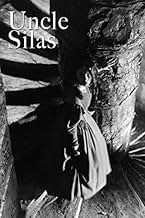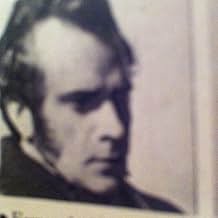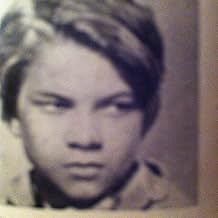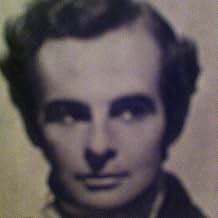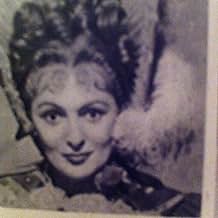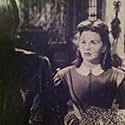Füge eine Handlung in deiner Sprache hinzuFollowing her father's death, a teenage British heiress goes to live with her guardian uncle--who is broke and schemes to murder her for her inheritance.Following her father's death, a teenage British heiress goes to live with her guardian uncle--who is broke and schemes to murder her for her inheritance.Following her father's death, a teenage British heiress goes to live with her guardian uncle--who is broke and schemes to murder her for her inheritance.
- Regie
- Drehbuch
- Hauptbesetzung
Empfohlene Bewertungen
UNCLE SILAS (called THE INHERITANCE upon initial release in the United States) fits well into the 1940s cycle of British adaptations of classic Victorian literature. Think David Lean's Dickens movies or the Alaistair Sims A CHRISTMAS CAROL, films which use gorgeous black and white photography and a blend of realism and melodrama to bring these gothic worlds to life.
Of course, UNCLE SILAS hasn't the literary pedigree of a Dickens' work: it is quite a sensational narrative, as close to the first-wave of gothic novels from the 18th century as Victorian gothic literature gets. For the trouble of being pretty and expecting a fortune when she comes of age, the heroine Caroline is threatened by a series of sinister forces connected with her Uncle Silas, a former rake and current drug addict who needs money badly to pay off his debts. He initially tries to get her to marry his lecherous son, but when Caroline makes it loud and clear that she won't do so, his methods turn ever more cruel and murderous.
UNCLE SILAS nails the gothic mood perfectly, showing the decay of Caroline's sunny adolescence as she loses her father and falls into the hands of evil. There is a wonderful symmetry in this progression-- the film begins with a close-up of the wide-eyed Caroline and ends with a similar close-up, now emphasizing her lost innocence after barely surviving the events of the film. Jean Simmons makes the perfect gothic heroine: beautiful, spunky, and virtuous, all without coming off as cloying or too dumb to live, a rare feat for this sort of story. The music is dramatic and spooky.
So why isn't the film the equal of, say, Lean's GREAT EXPECTATIONS or OLIVER TWIST? Mainly, it has to do with two things: pacing and the villains. I love a good slow burn, especially in creepy fare, but some of the middle section of UNCLE SILAS is too slow for its own good, probably because a few of these scenes lack the sinister presence of the forces pursuing Caroline and her money.
Secondly, the villains of the story are an uneven bunch. The sexually aggressive son and the ghastly governess are both slightly comical in presentation, but manage some level of menace when terrorizing Caroline. The son makes it clear he could physically overpower Caroline without a problem and what his intentions are for her, and the governess has a garish, harsh appearance and witch-like personality which would not feel out of place in a child's nightmare. Unfortunately, Uncle Silas himself is not scary at all. He is at times enjoyably camp and I'll never say no to a good ham-fest, but he's never truly frightening, often acting more like a whiny cartoon villain than the decadent, ruthless beast he is supposed to be.
I think the inconsistent sense of dread and menace is what brings UNCLE SILAS down a few pegs. It's still a good movie and one I would recommend to other classic film fans though, as its virtues outweigh its shortcomings.
Of course, UNCLE SILAS hasn't the literary pedigree of a Dickens' work: it is quite a sensational narrative, as close to the first-wave of gothic novels from the 18th century as Victorian gothic literature gets. For the trouble of being pretty and expecting a fortune when she comes of age, the heroine Caroline is threatened by a series of sinister forces connected with her Uncle Silas, a former rake and current drug addict who needs money badly to pay off his debts. He initially tries to get her to marry his lecherous son, but when Caroline makes it loud and clear that she won't do so, his methods turn ever more cruel and murderous.
UNCLE SILAS nails the gothic mood perfectly, showing the decay of Caroline's sunny adolescence as she loses her father and falls into the hands of evil. There is a wonderful symmetry in this progression-- the film begins with a close-up of the wide-eyed Caroline and ends with a similar close-up, now emphasizing her lost innocence after barely surviving the events of the film. Jean Simmons makes the perfect gothic heroine: beautiful, spunky, and virtuous, all without coming off as cloying or too dumb to live, a rare feat for this sort of story. The music is dramatic and spooky.
So why isn't the film the equal of, say, Lean's GREAT EXPECTATIONS or OLIVER TWIST? Mainly, it has to do with two things: pacing and the villains. I love a good slow burn, especially in creepy fare, but some of the middle section of UNCLE SILAS is too slow for its own good, probably because a few of these scenes lack the sinister presence of the forces pursuing Caroline and her money.
Secondly, the villains of the story are an uneven bunch. The sexually aggressive son and the ghastly governess are both slightly comical in presentation, but manage some level of menace when terrorizing Caroline. The son makes it clear he could physically overpower Caroline without a problem and what his intentions are for her, and the governess has a garish, harsh appearance and witch-like personality which would not feel out of place in a child's nightmare. Unfortunately, Uncle Silas himself is not scary at all. He is at times enjoyably camp and I'll never say no to a good ham-fest, but he's never truly frightening, often acting more like a whiny cartoon villain than the decadent, ruthless beast he is supposed to be.
I think the inconsistent sense of dread and menace is what brings UNCLE SILAS down a few pegs. It's still a good movie and one I would recommend to other classic film fans though, as its virtues outweigh its shortcomings.
The thing that I like about Uncle Silas a.k.a. The Inheritance is that it is not your average thriller. The suspense is built slowly as we see things that affect the life of the heroine, but she is not aware of them yet. The movie builds up more and more and it becomes an exciting suspense movie that packs a punch even for its time. Jean Simmons is practically a child in this movie, she was so young and beautiful as always. Great acting and gloomy characters make this a fun movie to watch on a stormy night. Lovers of old Gothic tales and suspense movies will not be disappointed.
I really enjoyed "Uncle Silas", although it's called "The Inheritance" on the VHS copy that I own and there are seemingly five minutes of footage missing. It's a wonderful, creepy little film about a young woman, Caroline (lovely Jean Simmons), who goes to live with her scheming old Uncle Silas in his big, gloomy mansion after her father dies. Uncle Silas (perfectly played by Derrick De Marney) and his accomplices; a French governess, Madame de la Rougierre (marvelously played by Katina Paxinou), and his son, Dudley (well played by Manning Whiley) are planning to do away with the heroine to gain her fortune. Thankfully, there are intervals where the young woman visits with her sympathetic cousin Monica (nicely played by Sophie Stewart). Brilliant music score by Alan Rawsthorne is available on CD through Amazon.com on a collection called Rawsthorne:Film Music. Nice cinematography and sets add the finishing touches to this atmospheric film. I got my VHS copy from Movies Unlimited.com.
This little known film disappeared into obscurity and without much comment after its release in 1947. It has resurfaced on British TV in recent years where it has been given several matinee showings. BBC readapted the Sheridan Le Fanu novel as "The Dark Angel" for its classic novel Christmas offering in 1987. In Peter O'Toole they found a much more striking eponymous villain than Derrick de Marney but in every other sense it is the monochrome 'forties version that gives me the stronger pleasure. How could if fail with a heroine as touchingly vulnerable as Jeans Simmons at her most enchanting. The pair that later directed her in "So Long at the Fair" must have known of "Uncle Silas" when they opened their film with a similar wondrous closeup to our first encounter with her here. I know nothing of the director Charles Frank apart from "Uncle Silas" but the hands of a talented craftsman are clearly at the helm of this atmospheric adaptation of the Victorian Gothic melodrama about a dastardly uncle's attempt to wrest an inheritance from his trusting young niece. It is a pity that Derrick de Marney's hammy performance does not resonate with a greater sense of evil, but there is compensation in his confidante, Madame de la Rougierre who, in the hands of Katrina Paxinau, is one of cinema's most sinister female monsters. I was not disappointed when the sequence that had so fascinated me as an impressionable adolescent, where the evil governess embarks with her young charge on a journey of deception, emerged as powerfully as ever after a gap of so many years. The clock chimes of Bartram Manor that conclude this episode, like the huntsman's cry of "Gone to Earth" in the Powell and Pressburger masterpiece are among my most haunting cinematic memories. I often wonder if young audiences of today find similar marvels in the films made for them.
I read in other user comments above that several U.S. viewers have only been able to see "Uncle Silas"(1947) in the inferior and censored title of "The Inheritance".Like the original "The Wicked Lady" 1945 which had to be re-shot minus décolletage, this was released at a time in America of great prudery.I am happy to report to my said U.S.brethren that the original U.K. version is available from www.myrarefilms.co.uk for which I paid £5 or about $7 + postage in your currency.In this more liberal climate I hate films being censored, after all, I am 69,so purchase a copy of the original rather than watch an inferior copy.
Jean Simmons was born in 1929 so when asked her age (16) in "Uncle Silas" she is nearly telling her real age of 18 and very young fresh & lovely she looks.Full marks to the set & dress designers to show clothes worn by ladies in 1845.Derek de Marney for once plays a villain as Uncle Silas compared to say "Young & Innocent" (1937) directed by Hitchcock, when he played the hero wrongly accused of murdering a lady associate found strangled on a beach.Other reviewers have adequately explained the plot above but do make an effort to see this film if you like Gothic horror.
Jean Simmons was born in 1929 so when asked her age (16) in "Uncle Silas" she is nearly telling her real age of 18 and very young fresh & lovely she looks.Full marks to the set & dress designers to show clothes worn by ladies in 1845.Derek de Marney for once plays a villain as Uncle Silas compared to say "Young & Innocent" (1937) directed by Hitchcock, when he played the hero wrongly accused of murdering a lady associate found strangled on a beach.Other reviewers have adequately explained the plot above but do make an effort to see this film if you like Gothic horror.
Wusstest du schon
- WissenswertesThis film's earliest documented US telecast took place in Los Angeles Monday 3/27/50, leading off Triple Feature Theatre on KECA (Channel 7), hosted by Art Baker.
- PatzerThe length of Jean Simmons' ringlets change from one shot to the other.
- Zitate
Uncle Silas Ruthyn: And here you are! One of my hopes fulfilled.
- Alternative VersionenThe American release, under the title, "The Inheritance" is six minutes shorter than the original British version, titled "Uncle Silas," after the film's source novel.
- VerbindungenVersion of El misterioso tío Sylas (1947)
- SoundtracksMy Hat, It Has Three Corners
(uncredited)
American traditional song
Played in the background during the scene in the London hotel.
Top-Auswahl
Melde dich zum Bewerten an und greife auf die Watchlist für personalisierte Empfehlungen zu.
Details
Box Office
- Budget
- 1.000.000 $ (geschätzt)
- Laufzeit1 Stunde 43 Minuten
- Farbe
- Seitenverhältnis
- 1.37 : 1
Zu dieser Seite beitragen
Bearbeitung vorschlagen oder fehlenden Inhalt hinzufügen


